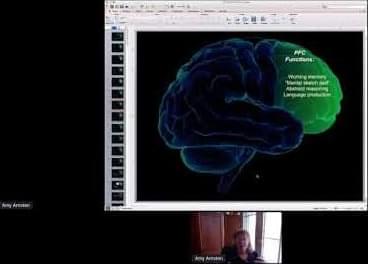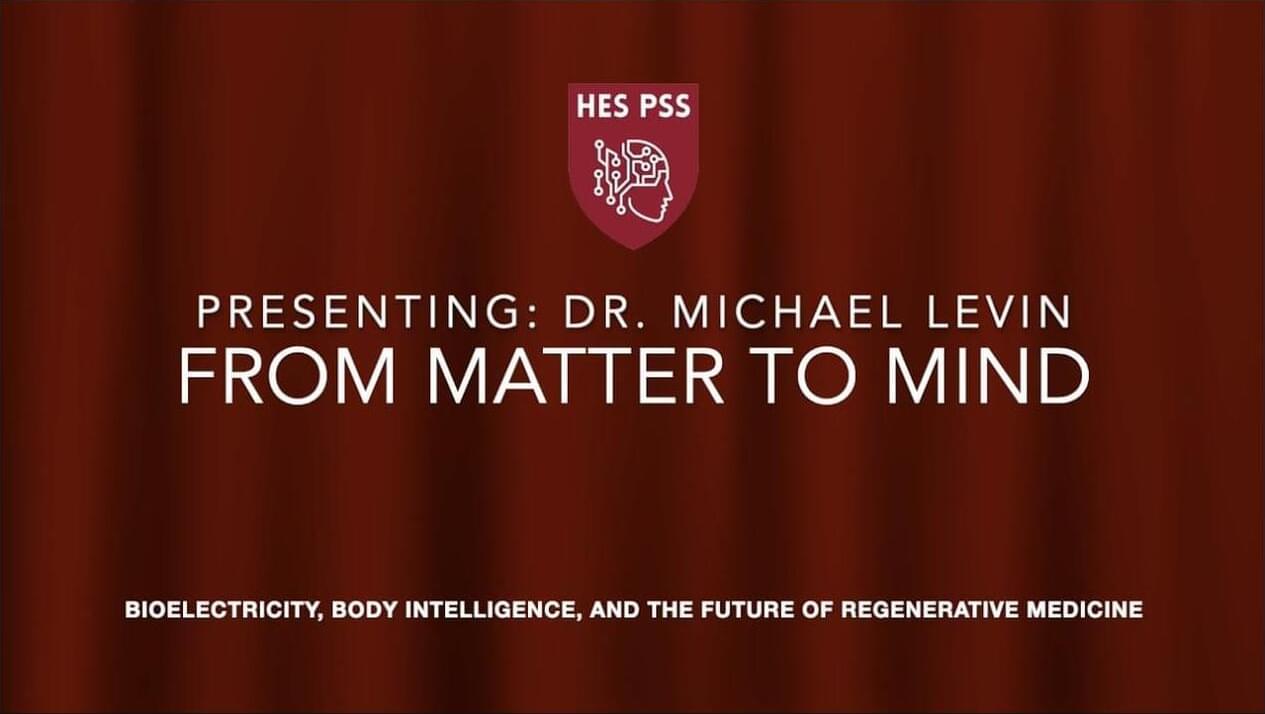Jul 9, 2024
Unlocking the Power of Your Brain: The Prefrontal Cortex Explained
Posted by Dan Breeden in category: neuroscience
🧠 Dive into the fascinating world of the human brain with our latest video, ‘Unlocking the…

🧠 Dive into the fascinating world of the human brain with our latest video, ‘Unlocking the…

Learn more about the Cognitive Science Student Association and the California Cognitive Science Conference at https://cssa.berkeley.edu.
Amy Arnsten — Yale University.
Continue reading “The Effects of Stress on Prefrontal Cortical Function” »

We were privileged to host the extraordinary Dr. Michael Levin, an eminent scientist and esteemed developmental and synthetic biologist, for a truly exceptional event titled \.

What Matters to Me and Why is a series of virtual presentations followed by discussion that goes beyond the great research we’ve heard about: To give our community a chance to get to know how our faculty came to their topics and—in their own words—what inspires and is important to them!
An international team of researchers of the Cluster of Excellence “Balance of the Microverse” at the University of Jena has investigated the mechanism that makes some types of bacteria reflect light without using pigments. The researchers were interested in the genes responsible and discovered important ecological connections. Their findings appear in the Proceedings of the National Academy of Sciences.
The iridescent colors known from peacock feathers or butterfly wings are created by tiny structures that reflect light in a special way. Some bacterial colonies form similar glittering structures.
In collaboration with the Max Planck Institute of Colloids and Interfaces, Leibniz Institute DSMZ-German Collection of Microorganisms and Cell Cultures, Utrecht University, University of Cambridge, and the Netherlands Institute for Sea Research, the scientists sequenced the DNA of 87 structurally colored bacteria and 30 colorless strains and identified genes that are responsible for these fascinating colonies. These findings could lead to the development of environmentally-friendly dyes and materials, a key interest of the collaborating biotechnology company Hoekmine BV.
Scientists have detected the decay of radioactive nuclei by tracking the recoil of dust-sized spheres on which the nuclei were embedded.
Scientists have developed a new way to trap small particles with light. Building on the Nobel Prize winning technique of optical tweezers (Arthur Ashkin, 2018), a team of physicists, led by Dr. David Phillips at the University of Exeter, has advanced the possibilities of optical trapping.
The research paper, published in the journal Science Advances, is titled “Photon-efficient optical tweezers via wavefront shaping.”
Conventional optical tweezers, developed in the 1980s, are a tightly focused laser beam which can attract and trap certain micro-sized particles or organisms, akin to grabbing something with a pair of tweezers.
A levitating microparticle is observed to recoil when a nucleus embedded in the particle decays—opening the door to future searches of invisible decay products.
For centuries, physicists have exploited momentum conservation as a powerful means to analyze dynamical processes, from billiard-ball collisions to galaxy formation to subatomic particle creation in accelerators. David Moore and his research team at Yale University have now put this approach to work in a new setting: they used momentum conservation to determine when a radioactive atom emitted a single helium nucleus, known as an alpha particle (Fig. 1) [1]. The demonstration suggests that—with further improvements—researchers might be able to use this technique to detect other nuclear-decay products, such as neutrinos and hypothetical dark-matter particles (see also Special Feature: Sensing a Nuclear Kick on a Speck of Dust).
The basic idea is simple: if the radioactive atom is embedded in a larger object, then an outgoing decay product will exert a backreaction on that object, causing it to recoil in the opposite direction. But is it really possible to detect the recoil kick from a particle as small as a helium nucleus? The answer lies in how precisely we can measure the larger object’s momentum. One of the main limitations is friction: if the larger object is slowed down by frictional forces, then its motion won’t reflect the impulse from the decaying particle.
In this work, we show that the flexible programming of the exchange-biased magnetic heterostructure enables the direct generation of various structured terahertz beams with complex polarization distributions. In the above demonstrations, we did not perform amplitude design on ENF(r), as lasers with Gaussian profiles were utilized to excite various programmed emitters. To exert control over local NF amplitudes, spatial light modulators can be further employed to manipulate the amplitude profiles of excitation lasers.
It is important to acknowledge that, owing to the inherent capability of generating only linearly polarized ENF locally, a crucial constraint arises: the NF terahertz amplitudes for the LCP and RCP components must be equal at all locations, leading to \({A}_{NF}^{L}(\mathbf{r})={A}_{NF}^{R}(\mathbf{r})\) at the emitter’s surface. As a consequence, both LCP and RCP terahertz fields are simultaneously generated in the far field. In situations where terahertz beams with a pure polarization state are of interest, one can strategically design the magnetization pattern so that desired polarization state is focused at the center, while surrounding it with other polarizations. By employing simple spatial filtering, this pure polarization state can be isolated and utilized. This concept was demonstrated by the LCP Gaussian beam in the last demonstration, where different spatial phase gradients were applied on the LCP and RCP light beams, allowing for their spatial separation in the far field.
Furthermore, by fabricating the heterostructures into appropriately oriented micro-structures, one can induce confinements onto the local charge currents [38,39,40]. This enables independent control over the x- and y-components of the local terahertz fields, potentially facilitating the realization of an arbitrary terahertz wave generator.
Researchers from the University of Twente in the Netherlands have gained important insights into photons, the elementary particles that make up light. They ‘behave’ in an amazingly greater variety than electrons surrounding atoms, while also being much easier to control.
These new insights have broad applications from smart LED lighting to new photonic bits of information controlled with quantum circuits, to sensitive nanosensors. Their results are published in Physical Review B.
In atoms, minuscule elementary particles called electrons occupy regions around the nucleus in shapes called orbitals. These orbitals give the probability of finding an electron in a particular region of space. Quantum mechanics determines the shape and energy of these orbitals. Similarly to electrons, researchers describe the region of space where a photon is most likely found with orbitals too.
